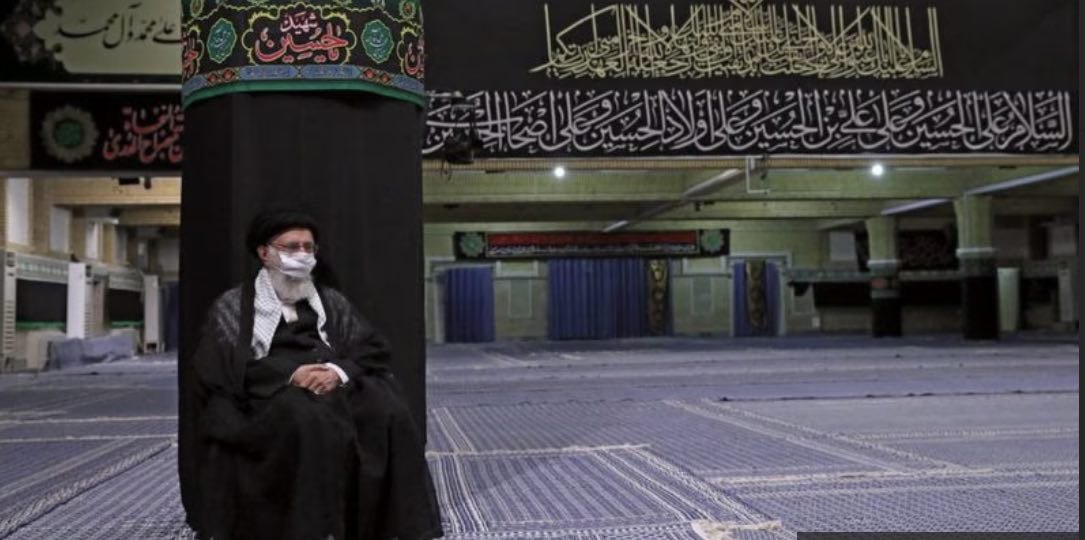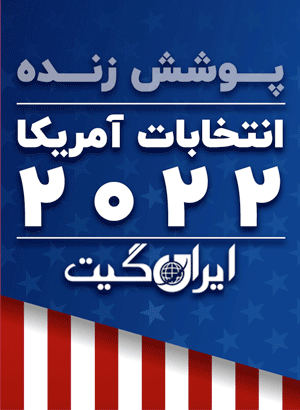The position of the Supreme Leader in the post-Mehsah era
The position of the Supreme Leader in the post-Mehsah era, according to Iran Gate, reflects the significant and profound changes that the women’s movement for freedom has brought to the political arena in Iran. This movement not only reflects the fundamental transformations hidden within Iranian society in recent years, but also provides a platform for their expansion and deepening, while being influenced by the experiences gained in Iran after the February 1979 revolution.
The Islamic Republic and its internal power balance have also been influenced by this movement and have undergone a new situation. Although the composition of forces and power equations have not undergone fundamental changes so far, signs of new divisions and rifts have become evident.
The controversy over how to deal with nationwide protests and its origins, whether domestic or foreign, has revealed the main source of the new division, which in turn deepens existing rifts. The struggle over the necessity of stopping the government’s repressive actions is the secret code of this internal rift. However, it should be noted that in the extremist mindset of the government, repression means widespread violence and killings. The Islamic Republic has also resorted to blatant violence and widespread suppression in these protests.
However, even with Ali Khamenei’s decision to adopt a non-flexible approach and maximum repression, this conflict was suppressed and the hardline factions were unable to fully advance their opinions. Of course, Khamenei’s pragmatism in managing the crackdown also had an impact, emphasizing minimizing killings and executions. Due to his years of rule, which have seen spilled blood and lost lives, the fuel and driving force of the protests.
As a result, it can be observed that the type of repression by the Islamic Republic and its judicial actions in recent widespread protests have significant differences compared to past behavioral patterns. Although around 500 people have been killed, nearly a thousand have suffered vision impairments, thousands have been detained, and hundreds have received judicial convictions, considering the revolutionary and overthrowing nature of the nationwide protests, their continuity, wide geographical, political, class, gender, and cultural scope, and the intensity of their radical slogans are relatively less than the usual approach of the Islamic Republic.
The reason for this event, which may change, is a combination of inability and unwillingness due to heightened security concerns and the aftermath of the November 1998 suppression tragedy. The government was forced to exercise relative caution in dealing with the situation within a short period of time. However, the main factor for the protest movement’s effectiveness and widespread support in society has been the power of public reaction and its extensive reach.
Tremors within the forces
Following that, there was a collapse and tremors in the social base of the government and an inability to mobilize the desired social support. The government was unable to demonstrate street power to the extent of past experiences, as government-affiliated networks of eulogizers remained inactive and the government’s clergy also had no active presence.
The explicit remarks of Hamid Abazari, the advisor to the commander of the Revolutionary Guards, regarding the resistance of certain officials and the opposition of some commanders to Khamenei’s views, align closely with observed signs and unofficial reports of disagreements within the power bloc. Based on unconfirmed reports, there has been a high level of disobedience and demand for leave, as well as a lack of presence in the scene of conflict between the middle and lower ranks of the Revolutionary Guards and the Basij. In the recent crackdown, the role of forces affiliated with the army and the police has been relatively greater.
This situation, especially the lack of support from religious authorities and prominent jurists within the country towards Ayatollah Khamenei’s positions, particularly regarding the use of religious punishment for issuing death sentences, indicates a deepening crisis of legitimacy in Khamenei’s rule, which is increasingly isolated within the government.
In his initial response to the protests, the Supreme Leader of the Islamic Republic expressed concern over this situation and referred to former and current government officials as the main opposition to the protesting people. However, only Hassan Khomeini, the Larijani brothers, and Mohammad Reza Bahonar responded positively to his request. Their response, however, did not meet Ayatollah Khamenei’s expectations, as they refused to attribute the source of the protests to hostile Western governments and disregarded the government’s inefficiency and the crisis of acceptance and legitimacy.
Reaction of the seminary and scholars
In the recent protests, Ayatollah Khamenei’s position has worsened among the seminary and scholars. None of the religious authorities, even those who have been supporters of the government and the conservative faction, have supported the government’s positions. Ayatollah Vahid Khorasani and Mousa Shobeiri Zanjani remained silent, while Nasser Makarem Shirazi, Abdullah Javadi Amoli, and Hussein Noori Hamedani not only did not support the government but also criticized it implicitly.
Morteza Moqtadayi’s opposition to previous senior judicial officials’ issuance of combat orders against protesters, along with the opposition of critical and reformist clerics such as Mostafa Mohaqeq Damad, Mohsen Kadivar, Mohsen Eeazi, Mohsen Mousavi Bujnordi, and Mohammad Reza Rahmat, highlights the more explicit and active stance of Sunni scholars like Molavi Abdulhamid. This is significant.
Only the clergy appointed by Khamenei, such as Ahmad Khatami, Kazem Sedighi, Ahmad Alamolhoda, Mohsen Araki, Abbas Kaabi, and Mohsen Heidari Alkasir, and the Association of Qom Seminary Scholars have supported him. The silence of Seyyed Hashem Hosseini Boushehri, the head of the Association of Qom Seminary Scholars, is also controversial. The manner in which this association’s statement was issued is also questionable.
Attack on the silent ones in the usual way
Therefore, Khamenei’s intensified isolation among both former and current government officials has not only a political dimension but also a discursive dimension. His framing of the country’s situation as a conspiracy by the governments of the United States and Israel to obstruct progress, and his insistence on strict political and cultural controls, especially regarding mandatory hijab, has faced more opposition and criticism within the power bloc, and has not found many buyers.
Short-term outlook
This situation has led to the preservation of the current state by relying more on coercive power and maximum intervention by Khamenei. As a result, the fragility of Khamenei’s position has increased. The increasing dissatisfaction with him both inside and outside the government has the potential to sideline him in circumstances where his security authority is compromised. However, his isolation is a consequence of his desired and unintended authoritarian mentality and inclination towards power monopoly. When he is unwilling to distribute power and engage with critical and moderate opinions within the power bloc, he will inevitably experience a decrease in supporting forces.
However, if the wave of revolutionary movement subsides, it is possible that the individual’s position in the government may strengthen. However, considering the numerous challenges in the country and the high intensity of dissatisfaction and anger towards the government, this situation may be unstable. The 1401 Movement has demonstrated its capacity for continuity so far, and even if it stops, it will not be in a way that disappears completely. Instead, it will serve as the underlying fire that paves the way for the next major wave of nationwide and comprehensive protests.
Therefore, Khamenei finds himself in the most difficult period of his leadership, facing not only the outbursts of anger and strong slogans of the majority of the Iranian people, but also experiencing greater constraints of support within the government. However, due to still having control over the main sources of power, he maintains his position of authority. Nevertheless, there is no guarantee for the continuation of this situation.
The high risks of Ali Khamenei’s actions, such as insistence on hostility in foreign policy, irrational and destructive actions in the parallel world, have raised more concerns among the government’s agents than before. However, the perspective of critics within the government differs from that of the protesting majority of the people, but the convergence of their positions weakens the authoritarian leadership of the Supreme Leader of the Islamic Republic.


